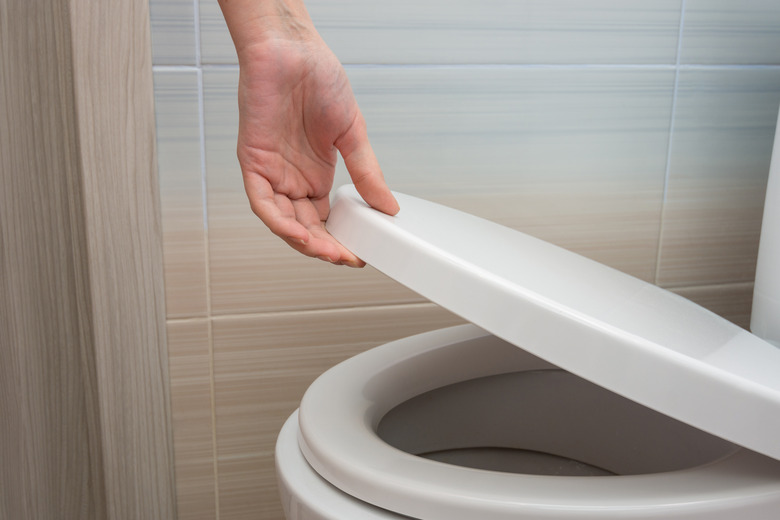How To Adjust The Toilet Tank Water Level With A Fluidmaster Model 400
We may receive a commission on purchases made from links.
If you have an older toilet, it probably features a traditional ballcock fill valve controlled by a ball float on the end of an armature. This type of valve isn't quite obsolete, but it probably soon will be, because cup-style valves, of which the Fluidmaster 400 is one of the most common, are so much more efficient. The cup valves are also easier to install and service. The most recent version allows you to adjust the tank water level by turning a plastic nut or wheel with your fingers — no screwdriver needed.
Adjust the Tank Level
Adjust the Tank Level
If your toilet already has a Fluidmaster 400 fill valve, you won't see a ball float when you open the tank, but instead a cup float that rides up and down on the fill valve tube. The float is connected to the valve mechanism by a plastic rod, and on the end of the rod is a nut or a wheel that adjusts the length of the rod. Fluidmaster provides detailed instructions on how to use this nut to adjust the water level in the box in which the valve is supplied.
The rod has screw threads on the end opposite the adjustment nut, and when you turn the nut clockwise, the screw advances, shortening the rod and allowing the float to rise higher before it shuts off the water. Turning the nut clockwise raises the water level in the tank and turning it counterclockwise has the opposite effect.
When the float is properly adjusted, the fill valve will close when the water level is about an inch below the opening of the overflow tube attached to the flush valve. If the water rises past this level, turn the nut counterclockwise to lengthen the rod. If, on the other hand, the water doesn't rise high enough, turn the nut clockwise.
Installing a Fluidmaster Fill Valve
Installing a Fluidmaster Fill Valve
You can install a Fluidmaster 400 fill valve on most toilets. Replacing the old ballcock can improve toilet operation and save water. It's an easy job that takes about 15 minutes and starts with turning off the water, emptying the tank and unscrewing the water supply hose from the toilet.
To remove the old valve, unscrew the lock nut on the underside of the toilet tank, using adjustable joint pliers and, if necessary, a little spray lubricant to loosen it if it's rusty. Unclip the rubber hose from the overflow tube and pull the valve out from the top of the tank, then remove all the nuts and washers and discard them. Slip the rubber washer that comes with the Fluidmaster 400 onto the treads at the bottom of the tube with the tapered end facing down.
Before you install the valve, PlumbingSupply.com reminds you to adjust the height of the valve by grasping the top and bottom and turning clockwise or counterclockwise as needed until the critical level (CL) line is an inch above the top of the overflow tube. Insert the bottom of the valve into the hole in the bottom of the toilet, screw on the lock nut and tighten it by hand or with pliers. Reconnect the water, turn it on and tighten the locknut a little more if water leaks from the tank.
Fluidmaster 400 Maintenance
Fluidmaster 400 Maintenance
When properly adjusted, the Fluidmaster 400 fill valve needs little attention, and because all the parts are plastic, it won't rust or corrode. If the tank fills slowly, though, you may have to flush the valve, and you can do this in a few minutes.
Turn off the water and empty the tank, then remove the cap by twisting it counterclockwise 1/8 of a turn. When the cap is off, hold a cup over the valve and have a helper turn the water on and off a few times. This procedure removes any debris in the valve that may be impeding water flow.
